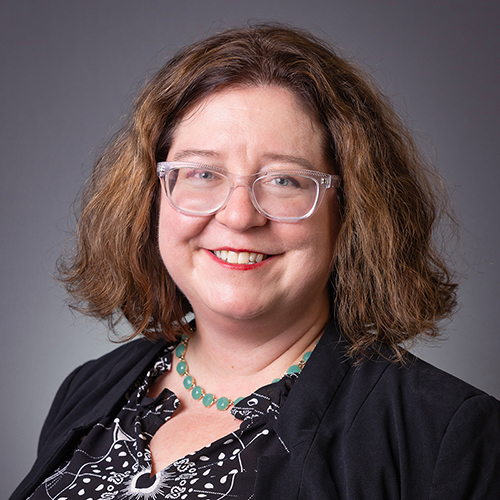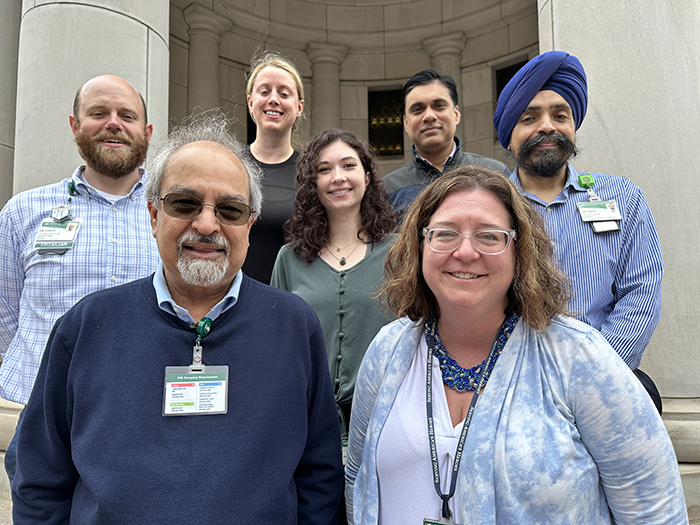![]()
 Merry-Lynn McDonald, Ph.D.Merry-Lynn McDonald, Ph.D., associate professor in the Department of Medicine, is the latest winner of the Heersink School of Medicine’s Featured Discovery. This initiative celebrates important research from Heersink faculty members.
Merry-Lynn McDonald, Ph.D.Merry-Lynn McDonald, Ph.D., associate professor in the Department of Medicine, is the latest winner of the Heersink School of Medicine’s Featured Discovery. This initiative celebrates important research from Heersink faculty members.
McDonald’s study, "Novel genetic loci associated with osteoarthritis in multi-ancestry analyses in the Million Veteran Program and UK Biobank," was recently published in Nature Genetics.
Her team conducted this study to understand why certain people are more likely to get osteoarthritis, a form of arthritis due to cartilage thinning with age. They compared variations in and around the genes of people with osteoarthritis to variations in those without the condition.
“We discovered genetic variation in 10 regions that occurs more often in people with osteoarthritis, in addition to confirming some previously known genes related to osteoarthritis,” said McDonald. “This provides new insights into the biology that could be influencing the development of osteoarthritis in all people.”
Read more from UAB News about the team’s work.
The Heersink School of Medicine communications staff sat down with Dr. Merry-Lynn McDonald to gain insight about this study, UAB, and the science community.
Q: What compelled you to pursue this research?
Osteoarthritis is a common disease that affects adults and usually worsens over time. We still do not understand enough about why certain people are more likely to get osteoarthritis or why some people with osteoarthritis do much worse than others. Also, treatments for osteoarthritis are limited mostly to pain management, and no cures are available. Once the pain associated with osteoarthritis becomes unbearable, joint replacement surgery becomes the only effective treatment option.
Q: What was your most unexpected finding?
Many of the genetic regions we found associated with osteoarthritis encode proteins in signaling pathways influenced by antiepileptic drugs. It’s interesting because physicians have been increasingly prescribing antiepileptics for osteoarthritis pain, knowing they work for some patients but not understanding why. Our findings provide scientific support for the physician’s intuition and an opportunity to refine it objectively with further research digging into the role of genetic variation in these regions.
Q: How do you feel your research will impact the science community?
We performed the largest multi-ancestry genetic association analysis of osteoarthritis. Our research is one of few studies that investigated both the Million Veteran Program (MVP) and UK Biobank cohorts as complete cohorts. Most previous studies of the UK Biobank only focused on the 95% of participants who self-reported as European White. However, the UK Biobank has around 500,000 participants, meaning 5% of it is 25,000 non-White participants, which is a good sample size to consider for genetic association studies. The challenge was how to analyze cohorts comprised of individuals from the same country but with different ancestral backgrounds. To address this, we used several approaches and were able to both replicate and discover new genetic loci associated with osteoarthritis.
 Front: Hemant Tiwari, Ph.D. and Merry-Lynn McDonald, Ph.D.; Middle: Joe Chiles, M.D., Alison Rocco, and Jas Singh, M.D., MPH; Back: Ava Wilson and Vinodh Srinivasasainagendra, MSCSQ: When did you know you had an important discovery?
Front: Hemant Tiwari, Ph.D. and Merry-Lynn McDonald, Ph.D.; Middle: Joe Chiles, M.D., Alison Rocco, and Jas Singh, M.D., MPH; Back: Ava Wilson and Vinodh Srinivasasainagendra, MSCSQ: When did you know you had an important discovery?
Osteoarthritis causes a lot of suffering, limiting mobility and ability to enjoy life. From the beginning of the project, we knew our research would be important because not only do we need to know more about why certain people get osteoarthritis, but we were conducting it in the largest and most diverse cohort to date, the MVP.
Q: What made you come to UAB?
I was recruited to UAB by Dr. Victor Thannickal, who, at that time, was the division chief of Pulmonary, Allergy, and Critical Care Medicine (PACCM), as well as our new division chief, Dr. Mark Dransfield. When I interviewed, I was impressed by PACCM’s top-notch pulmonary research as well as the network of experts in genetic epidemiology and statistical genetics within the School of Public Health, specifically Drs. Ryan Irvin and Hemant Tiwari.
Q: How has being at UAB and living in Birmingham affected your research?
I started at UAB in 2016 and was welcomed into the collegiate community. Dr. Lou Dell’Italia matched me with Dr. Marcas Bamman and Dr. Jasvinder Singh to work together to write the grant proposal which funded our research on the genetics of osteoarthritis in the MVP. This is only one example of the welcoming and collaborative nature of the UAB and Birmingham research community.
Q: What do you find makes the science community here unique?
The UAB science community is unique in that it has the cutting-edge infrastructure of larger universities and campuses along with the smaller campus feel of knowing your colleagues. For example, our team is comprised of investigators from UAB and the Birmingham Veterans Affairs (VA): Preeti Lakshman Kumar (UAB PACCM), Vinodh Srinivasasainagendra (UAB School of Public Health), Ashwathy Nair (UAB PACCM), Joe W. Chiles (UAB PACCM), Joshua Richman (Birmingham VA and UAB Surgery), Cynthia Brown (Birmingham VA, now Louisiana State University), Marcas Bamman (Birmingham VA, now Florida Institute for Human and Machine Cognition) and Jasvinder Singh (Birmingham VA and UAB Rheumatology) as well as collaborators from the Central Arkansas and Boston VAs.
Further, several trainees in my lab also assisted with executing analyses and manuscript editing, including two previous undergraduate research assistants, Alison Rocco and Sarah “Allie” Pinson, and one Ph.D. student, Ava Wilson (UAB School of Public Health).